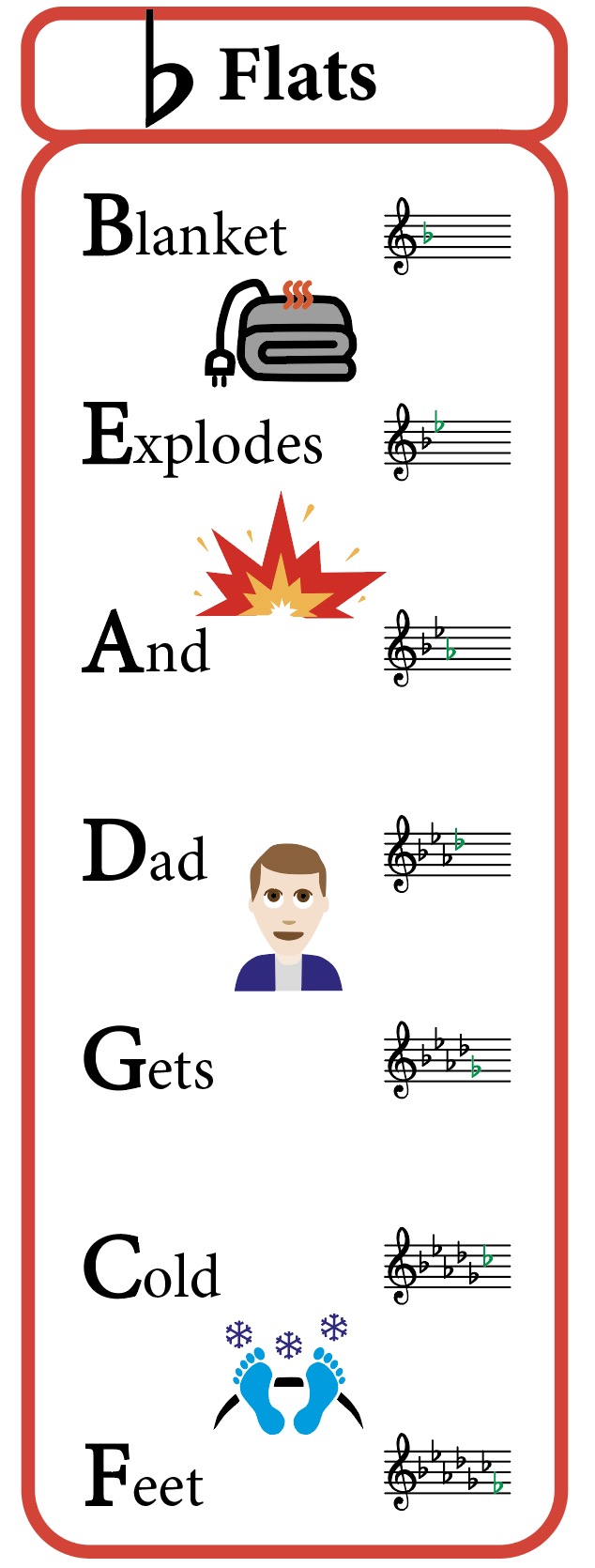Western music contains 12 different pitches. These twelve pitches can then be repeated over different octaves.
There are seven of these pitches that are ‘natural’ and these are the notes of the musical alphabet!
A B C D E F G
The remaining 5 pitches are then either sharp notes or flat notes.
So let’s look at exactly what a flat sign is in music.
What Are Flat Notes in Music?
Flat notes are notes that sound one half step (semitone) lower than we usually see on a musical staff.
The notes on a treble staff are:
F A C E in the spaces going from bottom to top.

E G B D F on the lines going from bottom to top.

Each of these notes can be altered to become a flat i.e. a half step lower. This is very easy to visualize on the piano keyboard. It is easy to think of the white keys as your natural notes and then the black keys as your flats. This is not strictly true but it does make it easier to see which note is a semitone lower.

What is the sign of flat?
To indicate that a note should be a flat note we used a flat sign. A flat symbol is simply written with a small letter ‘b’.
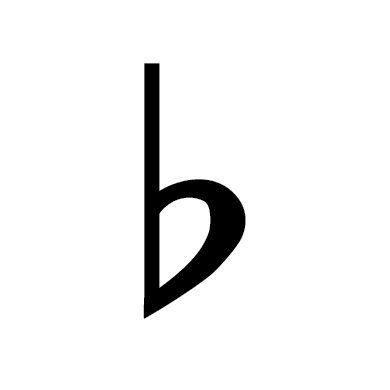
This symbol should be written in front of the notes that you wish to be flats.

Using a key signature
Sometimes in a piece of music we want to indicate that certain notes should all be the same pitch. For example, we might want the note b to always be flat in our piece. Rather than writing a flat sign on every single B in our piece, we can simply write this at the start of our piece in a key signature.

Key Signatures are a very useful tool to help music look less cluttered. By writing in key signatures we can ensure that performers will play the same notes in their sheet music.
When we write a key signature, we are indicating that a piece is in a certain key. If we have flats in our key signature then this is called a flat key.

Take a look at the piece of music below in the key of A flat major.
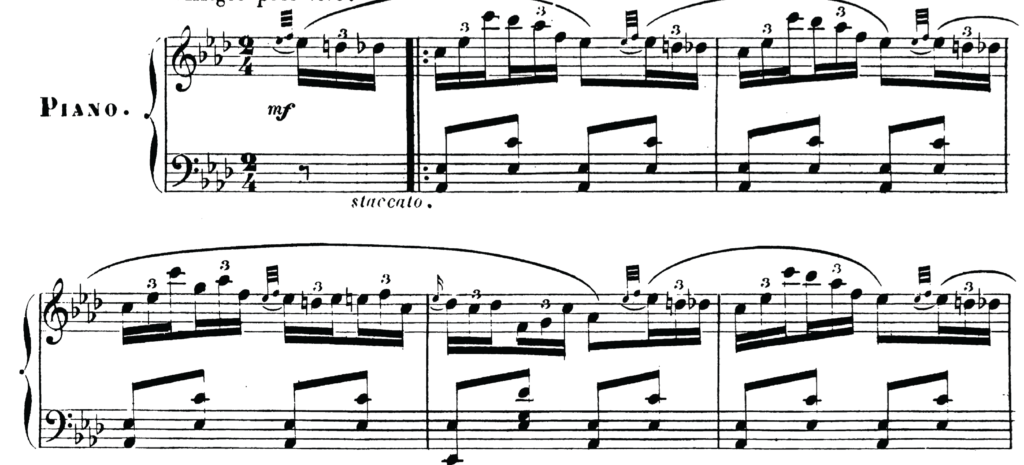
Accidentals within a Measure
The flat sign does not only have to be placed in a key signature, we can also add the symbol on notes that are perhaps not indicated in the key signature. For example, in the key of A flat major, we have four flats as we saw earlier. By having a key signature we indicate that only these certain notes will be flat.
However, if we would like any extra notes not included in the key to be flat then you will need to add an additional flat sign.
This flat sign will then last for every note that is the same for the entire measure (bar). As soon as there is a bar line, this accidental is then not relevant for any other measures unless the flat sign is written again!

In the music above you can see that we have a c flat. C flat is not included in the key but having a flat sign in front of the C natural we have now indicated that this note should be a flat (a half step lower).
It is also possible to cancel flats in the key signature by using a natural sign.

A natural sign literally cancels the flat sign in the key signature.
You can also add other accidentals in this way such as a sharp symbol, double flat symbol or a double sharp symbol.
What Is the Difference Between Sharp Notes and Flat Notes?
As we have seen, a flat sign indicates a note should be played one half step lower. A sharp symbol does the opposite, it makes the natural note one half step higher!
Enharmonic Equivalent Notes
We won’t cover this topic in great detail here but it is extremely important to make reference to it here as flat notes are so relevant!
Enharmonic equivalent notes are two pitches that have two different names but that sound the same. In order to achieve this, you must make use of the accidental. For example the note A flat and the note G sharp will sound the same.
A flat is the note A which has been lowered by a semitone (half step). On the piano, this will be going from the white key above to the black key below.

G sharp is the note G which has been raised by a semitone (half step). On the piano, this will be going from the white key below, to the next key, which is a black key above.
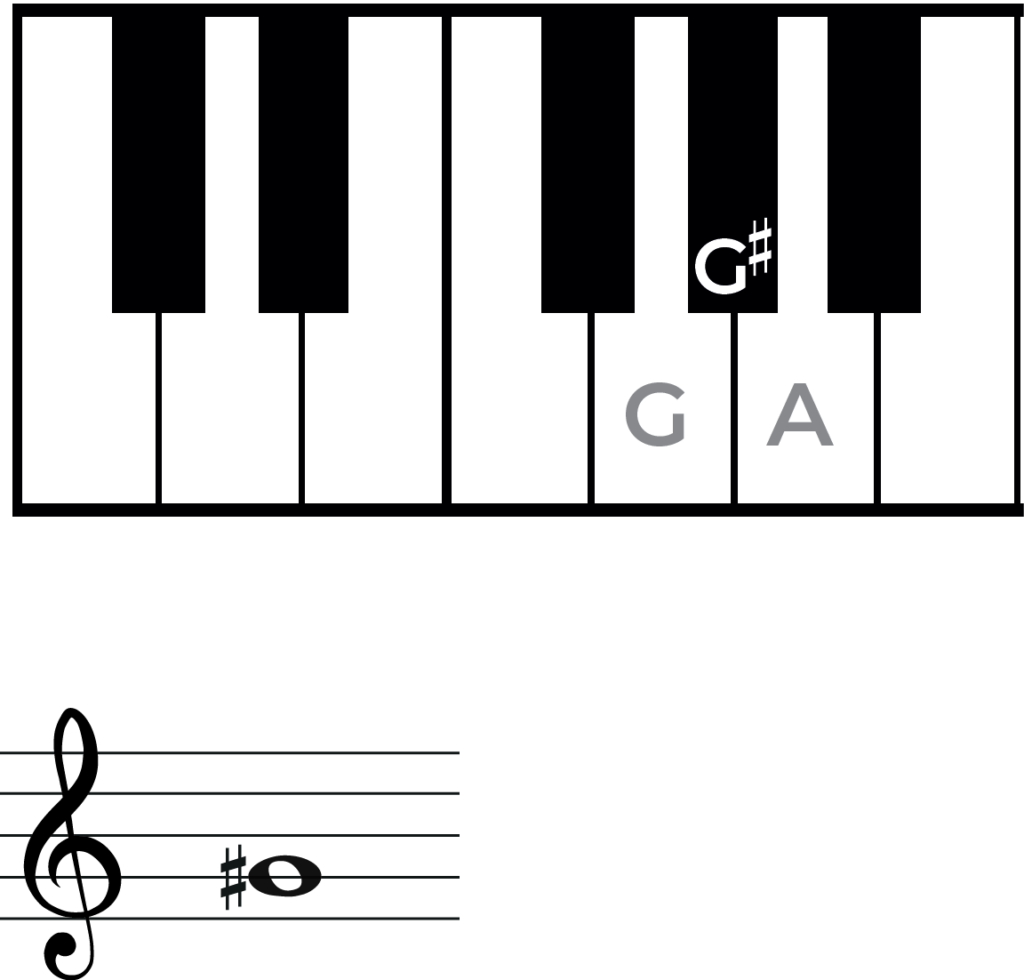
As you can see, these will be exactly the same note! It is especially easy to see on the piano keyboard.
When Should You Use a Sharp or Flat?
This is a very complicated question with a few plausible answers.
When to use a sharp or flat can be very much dependent on the key of the piece. For example, if you have a sharp key signature then you should use sharp symbols and when you have a flat key signature, you should use flat symbols.

Another way to add sharp and flat symbols is to think about which direction you are traveling in. If the melody is heading to a higher note then you should use a sharp symbol and if you are heading to lower note then you should use a flat symbol.


You can also use accidentals so that there is only one note on each line. For example, Gb, G, G# could be quite difficult to read so instead we would write F#, G, Ab.
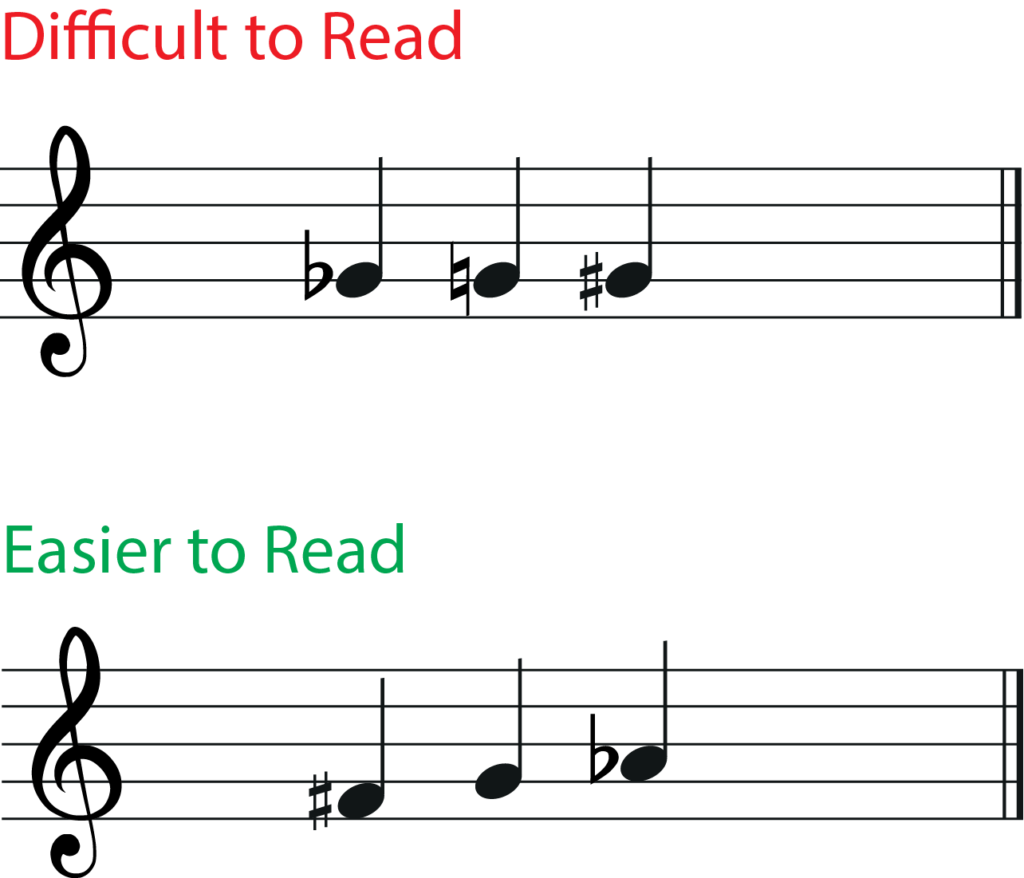
When writing in a minor key you will be more likely to use sharp or natural signs as this links very much into the raising of the sixth or seventh degree. See below a short melody in E minor. E minor’s key signature has one sharp, it’s raised seventh degree is the note D sharp. In this instance we would have to use a D sharp sign as changing this to E flat (although technically will sound the same) is not the sharpened seventh! D sharp is the raised seventh and this is why we use the sharp symbol and not the flat symbol.

There are many different ways to approach the use of accidentals but it is important to approach each piece of music differently.
How do you remember the sharps and flats on a scale?
To confidently remember all the sharps and flat notes in each scale, it is important to understand the circle of fifths. If you have a strong understanding of the circle of fifths you will find it very easy to remember how many sharps or flats their are in each key.
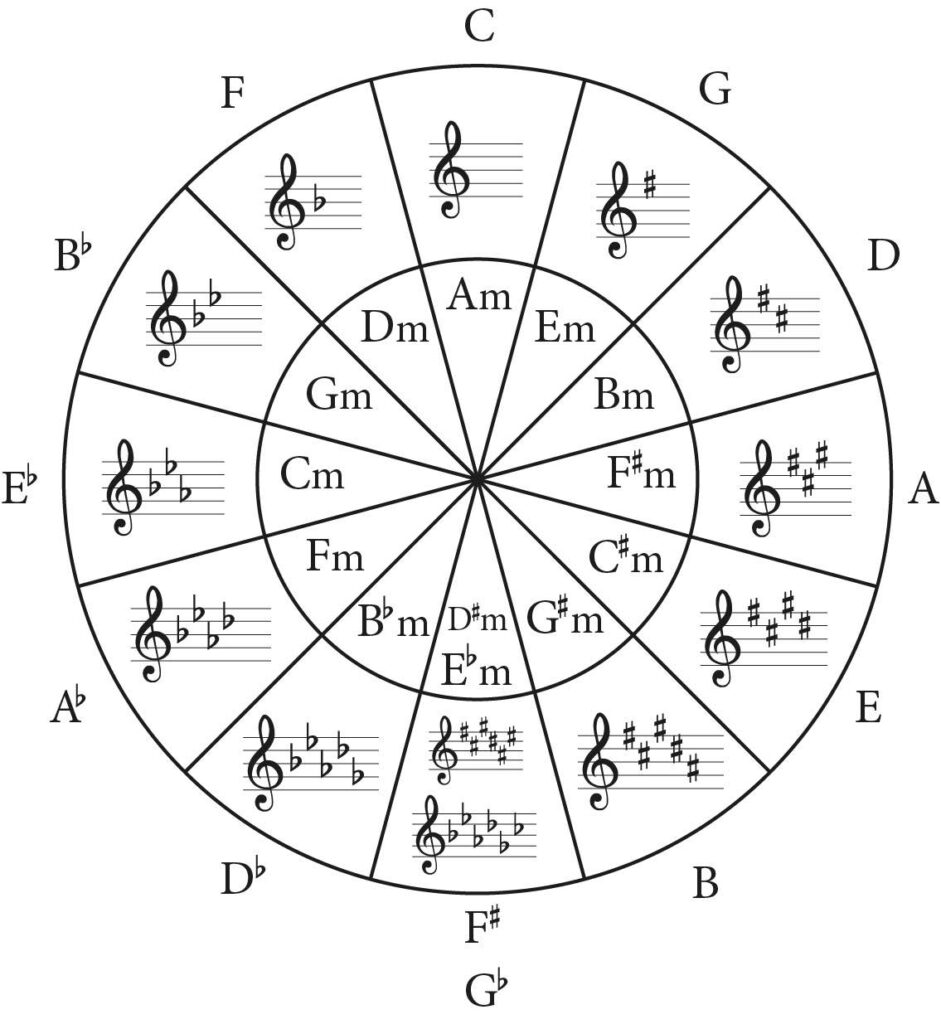
You can also remember the following rhyme to ensure you know the order of these sharp and flat symbols.
For the sharp notes:
Father, Christmas, Gave, Dad, An, Electric, Blanket
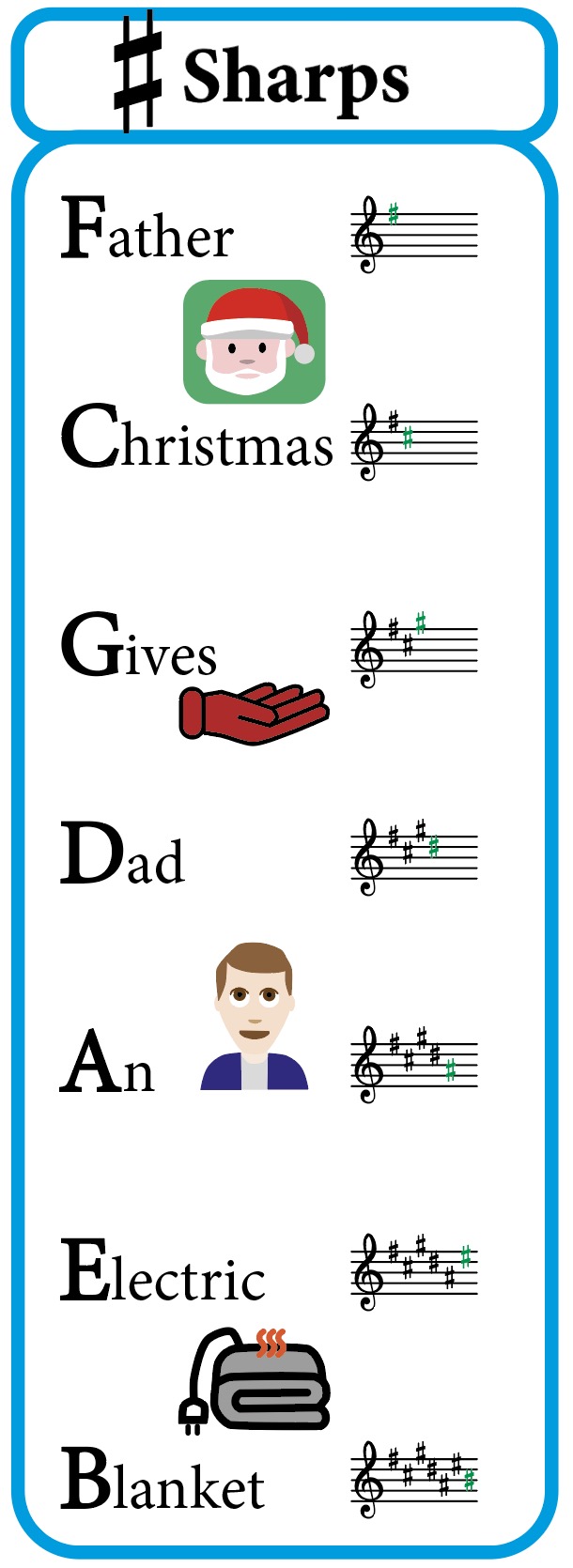
For the flat notes:
Blanket, Explodes, And, Dad, Gets, Cold, Feet
